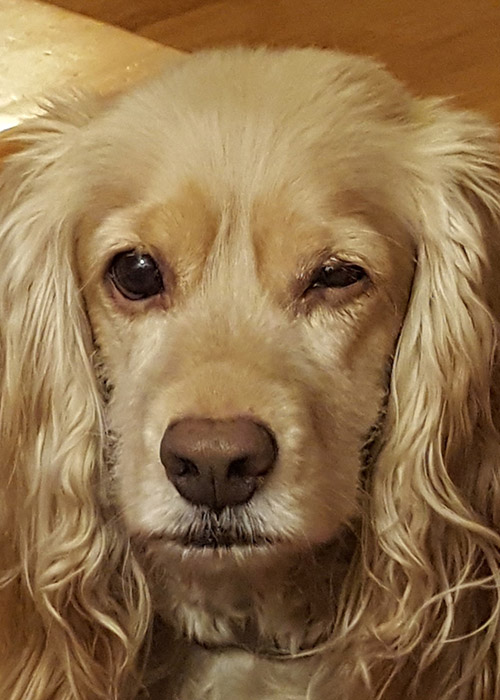
Corneal ulcers: More than just a scratch
Thursday, May 2, 2019
A corneal ulcer is one of the most common eye problems seen in pets. The cornea is like a windshield, protecting the eye. It is composed of multiple layers with an outer layer, the epithelium, preventing cloudiness and protecting the rest of the cornea from infection. An ulcer occurs when the corneal epithelium is damaged.
Corneal ulcers are very painful and lead to an infection. When an ulcer becomes infected, the disease can develop rapidly and in worst cases, result in loss of the eye. This is why it is extremely important to recognize a problem and seek treatment immediately.
How do you recognize a corneal ulcer?
The most common sign of a corneal ulcer is squinting. When the corneal epithelium is damaged, many nerves in the cornea are exposed, which is very painful. Animals vary in their sensitivity to this pain. While many animals will be in so much pain they may barely open the eye, other animals may display only mild squinting or excessive blinking. Squinting in an animal is always a sign of pain, so seek medical attention right away if you notice your pet squinting.
An animal with a corneal ulcer may also have excessive tearing. If you believe your pet is tearing up more than normal, have a veterinarian examine it. The cornea itself should always be clear. If an ulcer is present, it may become cloudy. Any cloudiness, redness or other changes in the appearance of the eye should be evaluated by a veterinarian.
What causes an ulcer?
Corneal ulcers can have many causes. The epithelium can be damaged if it dries out such as with dry eye disease, during anesthesia, or even if the dog tends to sleep with its eyes open. Something may rub on the surface of the eye causing damage. This can be seen if foreign material, like a seed hull, gets stuck on the eye or if the dog has entropion where the eyelids roll inward. Direct trauma to the eye can cause ulcers, such as an animal getting a scratch on the eye as it runs through a field. While the cause may not be identified in many cases, it is always essential to have a thorough examination of the eye performed to determine if there is an ongoing cause that requires treatment.
What can be done for an ulcer?
Because the cornea can easily become infected when an ulcer is present, any ulcer needs to be treated to prevent this from happening. It is important to choose an appropriate medication with your veterinarian because some eye medications contain drugs that can keep an ulcer from healing or promote infection. Your veterinarian can also provide pain medication for your pet to make sure it is comfortable while the ulcer heals. Any rubbing of the eye can prevent normal healing, so it is essential to use a protective collar during healing.
Simple corneal ulcers should heal quickly. An ulcer that takes longer than a week to heal indicates a complication — an infection may already be present or another process may be preventing normal healing. Always follow up with your veterinarian as directed to make sure the eye has healed normally.
Your pet’s vision and comfort are important in maintaining its quality of life. While an ulcer may threaten these, most ulcers will heal uneventfully when caught early and treated appropriately. Your veterinarian can help make your pet more comfortable and prescribe treatment to prevent complications while the ulcer heals. Always seek medical attention as soon as possible when your pet develops an eye problem.
